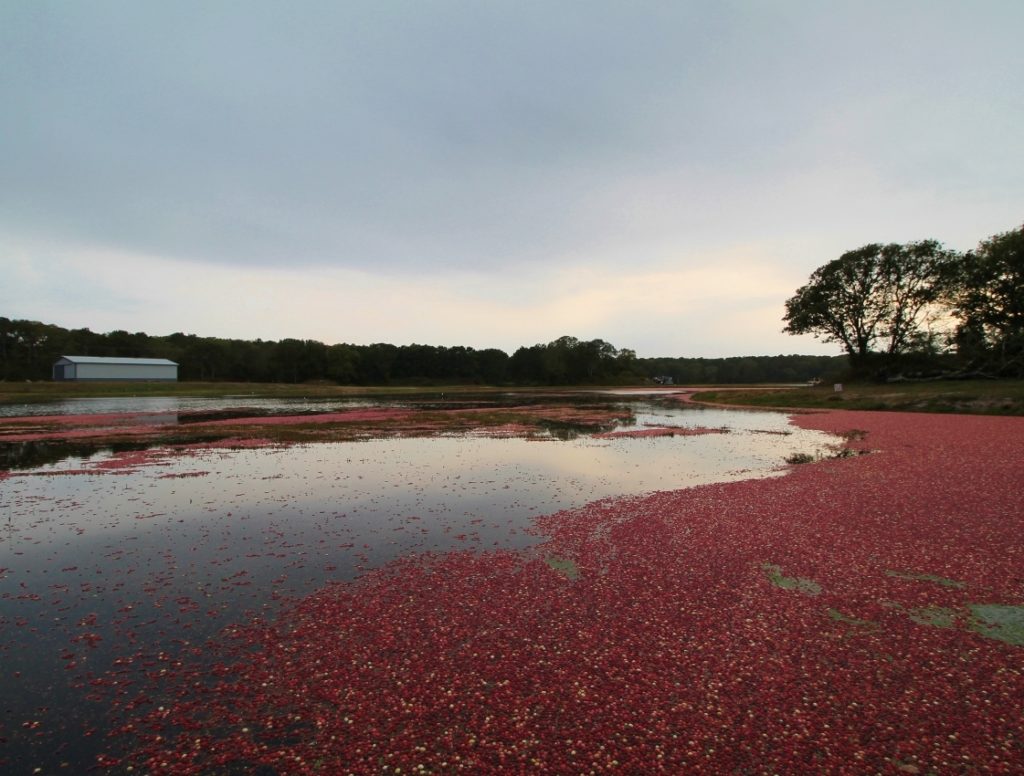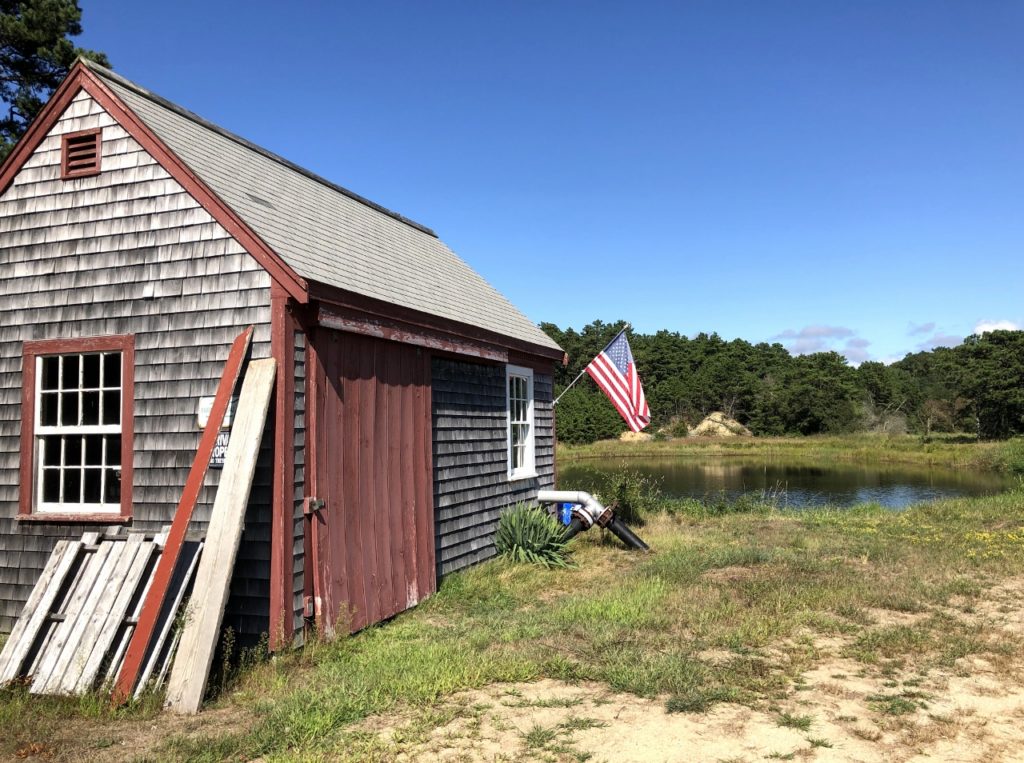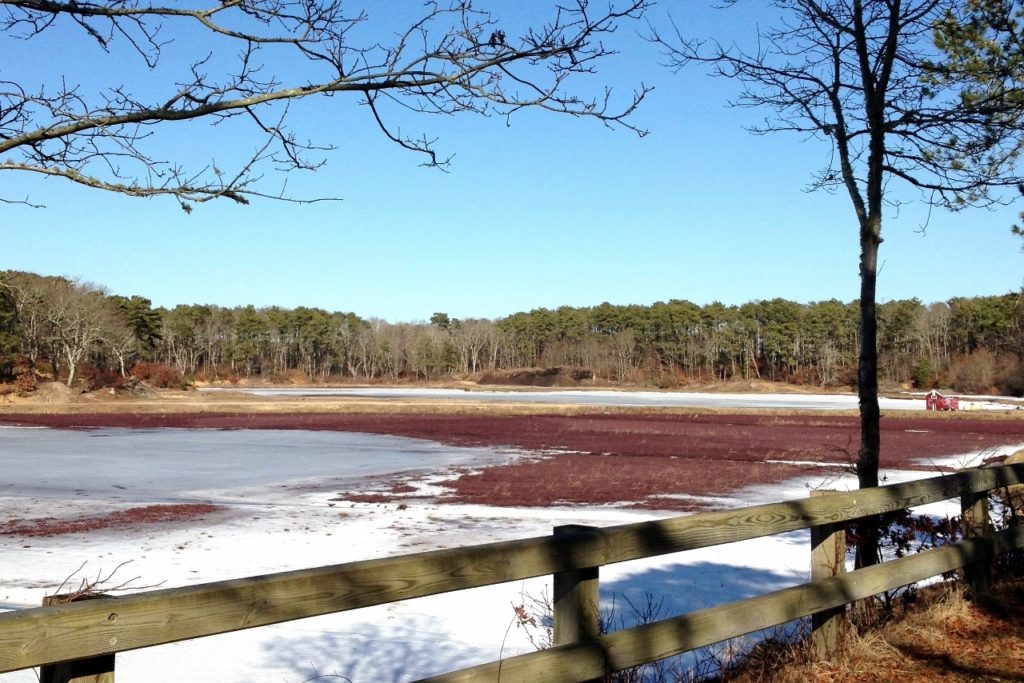Most people envision the Thanksgiving table with cranberry sauce served “fresh” from a can emblazoned with Ocean Spray’s distinctive wave logo. But Cape Codders are not “most people,” as virtually anyone familiar with the Cape will tell anyone willing to listen.
For Cape Codders and washashores, cranberries are a year-round treat for many reasons. They are a part of daily life. Most of us simply take in the beauty of the bogs that dot the Cape. Some Codders make their living growing the tart berries, and others choose to live on the bogs – rather than in them – by purchasing sought-after real estate overlooking one. The sight of a flooded bog during the fall harvest brings a sense of awe and hometown pride.

In the Beginning
Cranberries on Cape Cod trace their roots to well before the arrival of the Mayflower. The Harwich Historical Society’s website states cranberries are one of only three fruits native to the United States (squash and grapes are the others), and they were “widely utilized by Native Americans . . . as both an important food crop and colorful dye.” Cranberries were also used medicinally by indigenous peoples.
The Harwich Historical Society Museum at Brooks Academy includes the largest cranberry-related exhibit on the Cape, which isn’t surprising, since the first commercial crop of cranberries in the U.S. came from Harwich by Captain Alvin Cahoon in 1846.
Cranberries require a very specific environment to thrive. They grow in bogs – natural, shallow bowls of land – and need a mix of sand and acidic, peaty soil, and ample amounts of fresh water. Bogs were naturally prevalent in Harwich. By the early 1800s, cranberry farming was well underway in the Lower Cape town.

Once people realized there was money to be made from the odd, swampy bogs, people staked their claims and commercial cranberry growing exploded: first in southeastern Massachusetts, then in states such as New Jersey and Wisconsin. Bogs are now manmade (no need to rely on nature anymore), and Wisconsin now outranks Massachusetts in growing cranberries. And the Town of Plymouth is the highest producer of cranberries in the commonwealth, but Harwich is still number one on Cape Cod.
Ocean Spray
While those cheese makers in the Midwest may now grow more berries than the Bay State, it was in southeastern Massachusetts that Ocean Spray got its start, and they’re still here.
Ocean Spray, the global purveyor of all things cranberry, was founded in 1930 by three independent growers. Independent cranberry farmers from across the country quickly joined the cooperative. Within a decade, Ocean Spray launched its first product. It was – wait for it – jellied cranberry sauce. Cranberry juice cocktail quickly followed. Ocean Spray continues to operate as a cooperative, with more than 700 independent family growers nationwide, and many of the berries grown on Cape Cod end up in Ocean Spray’s products.
According to a story on BostonMagazine.com, Ocean Spray’s annual sales now top $2 billion, with products sold “from Boston to Beijing.” And because cranberries contain 10 vitamins and eight minerals, they’re now considered a “superfood.”
The Harvest
In southeastern Massachusetts, most cranberries are harvested in late September and early October, and most are “wet” harvested. A wet harvest entails flooding the bog. Specialized equipment is used to loosen the individual berries from the vines. The berries float to the top of the water, and a machine sucks the cranberries up a shoot into the back of waiting truck.

If you are lucky enough to be on Cape Cod during harvest season, and happen to drive by a bog, the crimson sea of floating berries is impossible to miss. You will also likely find it impossible not to stop and take in the gorgeous sight. Your Instagram followers are guaranteed to ooh and aah over your photos.
But wet harvesting is not the only method of harvesting. The individual, fresh berries that you buy for baking bread and cookies, or making your own cranberry sauce, have been “dry” harvested: picked by hand with a bit of help from machinery. Wet harvested berries are only viable for prepared foods, such as jelly and juice. Dry harvesting is more labor intensive, but yields a much higher price per barrel.
Should you be on Cape Cod when the harvest is happening, you can tour a working bog and learn more about the history of cranberries and how they’re grown.
The Beauty of Bog-Front Living

Sure, everyone dreams of living on the ocean. If you’re lucky enough to purchase oceanfront or lakefront property, plan on having neighbors close by. Waterfront property comes at premium on the Cape, and chances are you probably won’t be purchasing enough acreage to surround yourself with nothing but nature.
Land overlooking a cranberry bog can be pricier than the average acreage on Cape Cod, but your budget will go further than with waterfront property. Cranberry farms are, in fact, farms¸ so they’re typically located in the more rural, less populated areas of the Cape. With many bogs measuring several acres, you would be able to enjoy an open, bucolic view year round. And come early October, you’d even have a water view… at least for a few days.
